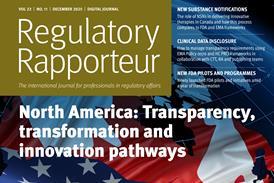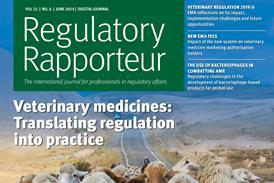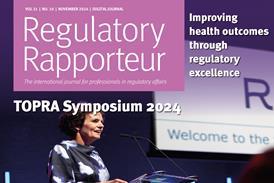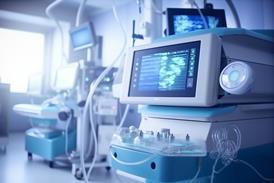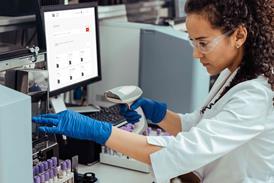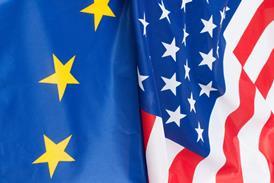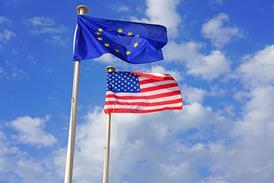All EU articles
-

-
 Journal
JournalHM1: Update on EU new regulatory legislation − EMA, industry and others
Regulatory Rapporteur December 2023 | Volume 20 | No.11 Leaders: Marta Marcelino, Head of Medicines Evaluation Department, PT CMDh Member, Infarmed, Portugal. Julie Taccoen, senior Director Regulatory Affairs, PTC Therapeutics, France. Speakers: Olga Solomon, Head ...
-
 Journal
JournalIVD4: How to manage diverging regulatory strategies within a global market (China, US and the EU)
Regulatory Rapporteur December 2023 | Volume 20 | No.11 Session leaders Amanda Brown, Director of Quality and Regulatory Affairs, HP, Germany. Ashleigh Batchen, Regulatory Strategy Principal (UK), TÜV SÜD, UK. Speakers Maurizio Suppo, Vice President ...
-
 Journal
JournalRegulatory challenges and opportunities facing hearing aid manufacturers in Europe
In a world where many people are living longer but not all are living well and age-related hearing loss affects approximately 20% of the European population aged 65 or older – hearing aids address a medical need which for the most part remains unmet. With increasing evidence ...
-
 Journal
JournalA year of clinical trials under IVDR:
a sponsor’s perspectiveThe new EU in vitro diagnostic medical devices regulation (IVDR) extends to medical use of in vitro diagnostics (IVDs) in clinical trials, in addition to marketed IVDs. Although compliance to some aspects has been required since the Date of Application on 26 May 2022, there has been ...
-
 Journal
JournalEU versus Rest of the World regulatory frameworks and requirements for human tissue-based products
After participating in and/or hosting over 100 global competent authority inspections, the only true consistency is that no two inspections are the same. I see so many companies try to predict the inspectors approach, agenda…even the physical route they will take prior to the audit. Some upfront risk assessment and ...
-
 Journal
JournalEuropean regulatory fees – complexity, concerns and solutions for efficiency
Regulatory authorities charge fees for the services they provide related to marketing authorisations. This research aimed to understand the complexity and concerns around the fee calculation and payment process for EU procedures used for market approval of a drug and proposes potential solutions to improve efficiency.
-
 Journal
JournalHarmonising regulation of medicinal allergen products throughout the European Union – the historic situation and subsequent CMDh guidance
Allergen products in the EU are defined as goods ‘intended to identify or induce a specific acquired alteration in the immunological response to an allergizing agent’. Historically, allergens were authorised under the national frameworks of member states (MS) with some legislation pre-dating the Treaty of Rome in 1957. This led to regulatory problems, such as pharmacovigilance monitoring standards. The Co-ordination Group for Mutual Recognition and Decentralised Procedures – Human (CMDh) addressed these authorisation issues and published a document on recommendations to common regulatory approaches for medicinal allergen products. This article provides an overview of the CMDh guidance, including a summary of some of the responses received during its consultation phase.
-
 Focus
FocusProcedure withdrawals within Europe: past trends, impact and communication recommendations
When an application for a new veterinary medicinal product (VMP) is submitted through a MR/DCP, the Applicant has the option to prematurely withdraw their application in the reference member state (RMS) or in one or several of the concerned member states (CMS). This would result in a total or partial withdrawal of the procedure. The Co-ordination Group for Mutual Recognition and Decentralised Procedures – Veterinary (CMDv) sent a questionnaire to all national competent authorities…
-
 Journal
JournalBrexit: The regulatory landscape one year on
A year since the UK departed from the EU, what has changed? The UK has started to depart from the EU in a number of different ways. This article will explore what has changed, how it came about and what to look out for as the relationship between the UK and EU, as well as the rest of the world, continues to evolve.
-
 Focus
FocusBrexit − Regulatory and supply chain considerations
The UK formally left the EU on 31 January 2020 and the transition period, as set out in the withdrawal agreement, came to an end on 31 December 2020. During this transition period, the UK continued to remain under EU pharmaceutical law. From 1 January 2021, the UK adopted an ...
-
 Focus
FocusPharmacovigilance regulations post-Brexit
The UK (Great Britain and Northern Ireland) has left the EU and the Brexit transition period has passed. This article covers points to consider when ensuring that pharmacovigilance systems for human medicinal products are compliant with EU and UK requirements. The UK requirements largely mirror the existing EU pharmacovigilance (PV) ...
-
 Meeting Report
Meeting ReportIVD3: EU Implementation: Current State
The session was opened by Bjorg Hunter posing a question about how innovative companies can manage often complex and different global regulations when they are developing connected, environmentally friendly products for the benefit of the patients…
-
 Journal
JournalEU PIP breast implant withdrawal
The Poly Implant Prothèse (PIP) silicone breast implant failures had a socioeconomic impact at an international level, affecting nearly 400,000 patients in 55 different countries,[1] and resulted in major EU regulatory updates. PIP was a French company founded in 1991 and it produced approximately two million sets of silicone breast ...
-
 Journal
JournalFundamentals of the European devices regulatory framework
In the EU, the development of medical devices is supported by the European Commission Directive (93/42/EEC Medical Devices Directive). To this, the EU has a unique system in dealing with medical devices, iconised as the CE Marking, which provides the right for the products to be commercialised in the EU. This continuing professional development supplement presents the unique system of medical devices that is currently applied in the EU. Additionally, the new regulation of medical devices (EU 2017/745 Medical Device Regulation) is also covered.



